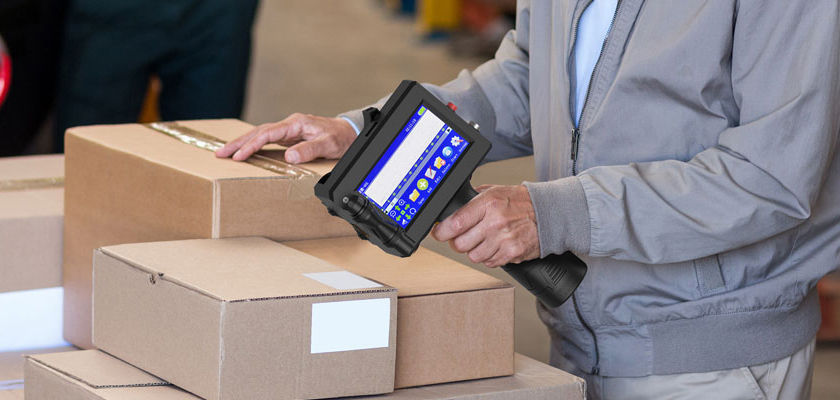Bags, cans, bottles, boxes, heat shrink packaging: so many different types of packaging, each with its own unique characteristics. But when it comes to printing bar codes, traceability codes or post-custom codes, choosing the right coding technology becomes critical if you want to control overhead, make your business run efficiently and satisfy you customers.
The difference between primary packaging and secondary and tertiary packaging
What is primary packaging? Primary packaging is the layer of packaging closest to the product, a final line of defense between the product and the outside world. Examples include: potato chip bags, wine bottles, jars, and chocolate bar wrappers. Sometimes the first level of packaging needs to be removed altogether (e.g., sandwich packaging); other times, it stays the same (e.g., wine bottles). But in the case of FMCG, almost all products cannot be separated from primary packaging.
coder for primary packaging
What is secondary packaging and tertiary packaging? Secondary packaging is the second stage of packaging for a product. It can be a large package of chips that contains multiple pouches inside, a heat shrink package that packs multiple boxes of drinks together, or a cardboard box with a can of beer inside.
Tertiary packaging is the third stage of packaging for the product and is rarely seen by customers except at cheap retail wholesalers. It can be a shrink-wrapped pallet of pallets for the distribution center to use to transport the product in bulk from the manufacturer to the retailer.
Again, let's take wine as an example: the wine would go into bottles (primary packaging). A certain number of bottles are placed in cartons (secondary packaging), which are then loaded into pallets and shrink-wrapped for distribution (tertiary packaging).
Throughout this entire packaging hierarchy, labeling is particularly important.
Why product identification is important? In order to track the product throughout the supply chain, each level of packaging (and sometimes even the product itself, such as eggs) must carry an identification that identifies the product, provides the source of production, and determines its authenticity. The usual format for such identification is a barcode, but it may also be a more modern machine-readable code, such as a QR code or 2D code.
QR CODE
There are many different coding technologies available, how do I choose the right one?
What are the available coding technologies? Despite customer expectations, the fact is that there is no "one-size-fits-all" technology that can be applied to every level of packaging. Different packaging materials and application environments still require different printing technologies to achieve.
Laser Coders
Laser coders can print permanent (non-erasable) serial numbers, batch numbers, bar codes and DM codes at high speeds, but on some packaging materials, the contrast of the print needs to be enhanced.
Inkjet Coders
Inkjet coders like UPRINTJET handheld Inkjet printer are more versatile, and by matching different ink types, they are able to mark on different packaging materials and products, and can also be applied to different production environments.
The print quality of a thermal foam inkjet coder depends on the way the product passes through the print head on the production line. If the product being coded is in a moving and unstable state, it can be a little difficult to print.
It should be noted that the first level of packaging coding requirements and the second and third level of packaging coding requirements are different. For the first-class packaging, the requirements of the spray code resistant to friction and cannot be erased. For secondary and tertiary packaging, it is more focused on consistency and readability. The needs of secondary and tertiary packaging can usually be met by an integrated printing and labeling system: self-adhesive labels are printed and automatically applied to the outside of the case, the pallet or shrink wrap that encloses the product, or even applied to the pallet.
